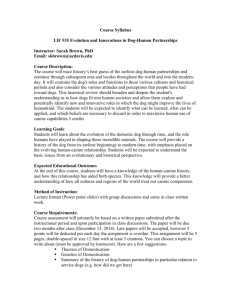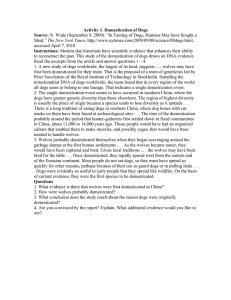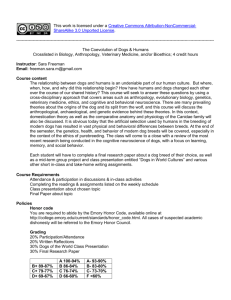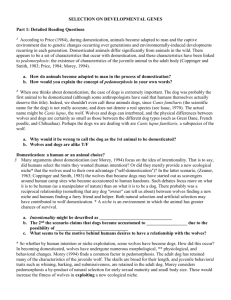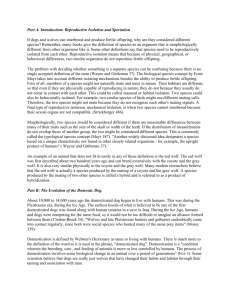Dogs Gone Mild - Home All Things Canid.org
advertisement
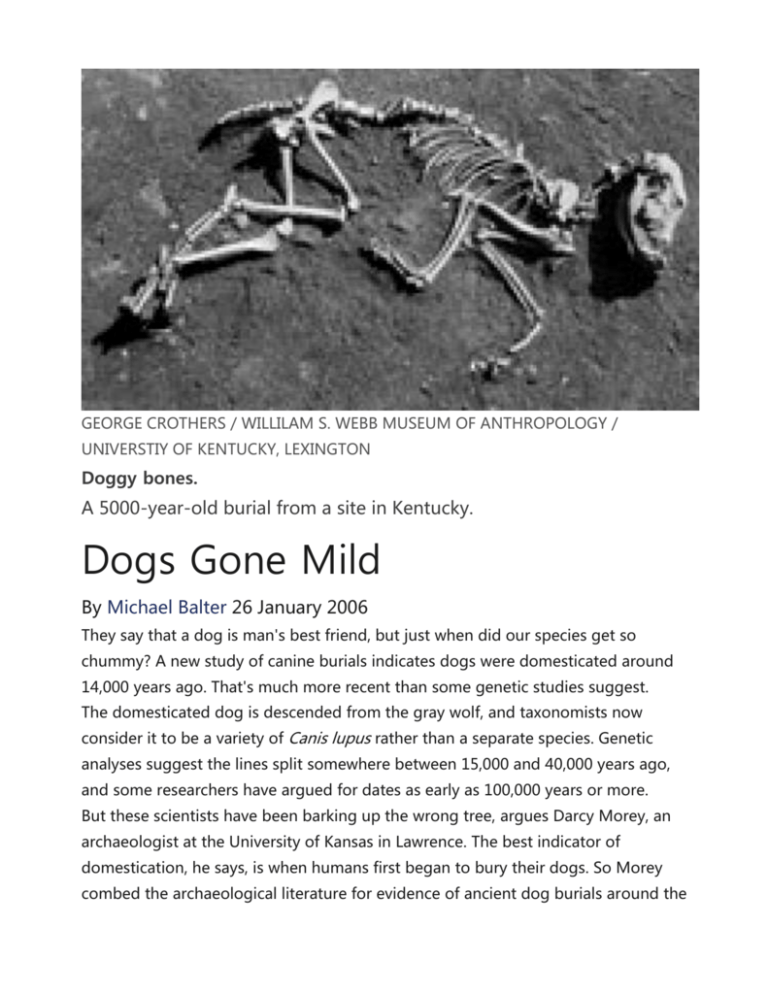
GEORGE CROTHERS / WILLILAM S. WEBB MUSEUM OF ANTHROPOLOGY / UNIVERSTIY OF KENTUCKY, LEXINGTON Doggy bones. A 5000-year-old burial from a site in Kentucky. Dogs Gone Mild By Michael Balter 26 January 2006 They say that a dog is man's best friend, but just when did our species get so chummy? A new study of canine burials indicates dogs were domesticated around 14,000 years ago. That's much more recent than some genetic studies suggest. The domesticated dog is descended from the gray wolf, and taxonomists now consider it to be a variety of Canis lupus rather than a separate species. Genetic analyses suggest the lines split somewhere between 15,000 and 40,000 years ago, and some researchers have argued for dates as early as 100,000 years or more. But these scientists have been barking up the wrong tree, argues Darcy Morey, an archaeologist at the University of Kansas in Lawrence. The best indicator of domestication, he says, is when humans first began to bury their dogs. So Morey combed the archaeological literature for evidence of ancient dog burials around the world, identifying more than 50 sites on every continent except Antarctica. The earliest known dog burial, 14,000 years old, was in Germany, and canines were also deliberately laid to rest as long as 10,650 years ago in Siberia, he reports in the February issue of the Journal of Archaeological Science. The earliest North American site, in Illinois, is 8500 years old. Sometimes the dogs were buried alone; sometimes they were buried with other dogs or even cuddled up together with humans. The people of 2200-year-old Ashkelon in Israel, for example, buried more than 1000 dogs in a prehistoric pet cemetery, placing each animal in a separate grave and curling its tail towards its feet. At Lambert Farm in Rhode Island, which was first occupied 1150 years ago, archaeologists found a dog buried with several softshell clams arranged around its head. Morey contends that such finds provide the best evidence for the earliest dog domestication. "It is the secure burial data that blow the genetics-based scenario wide open," he writes, adding that the "essence" of domestication is "a social relationship that is clearly signified by the burial of deceased dogs by people." Simon Davis, a zooarchaeologist at the Portuguese Institute of Archaeology in Lisbon, says he finds Morey's argument convincing. As for the discrepancy between the genetic and archaeological evidence, he speculates that the DNA studies may be a measure not of domestication itself but rather the timing of the split between the ancestral wolf population and the lineage that later went on to become domesticated. Carles Vilà, an evolutionary biologist at the Uppsala University in Sweden, who performed some of the genetic analyses that Morey criticizes (Science, 13 June 1997, p. 1687), agrees that "genetic divergence is not the same as domestication." On the other hand, Vilà says, it is more likely that "dogs were domesticated well before 14,000 years ago [but] were not subjected to ceremonial burials over most of their distribution range."

